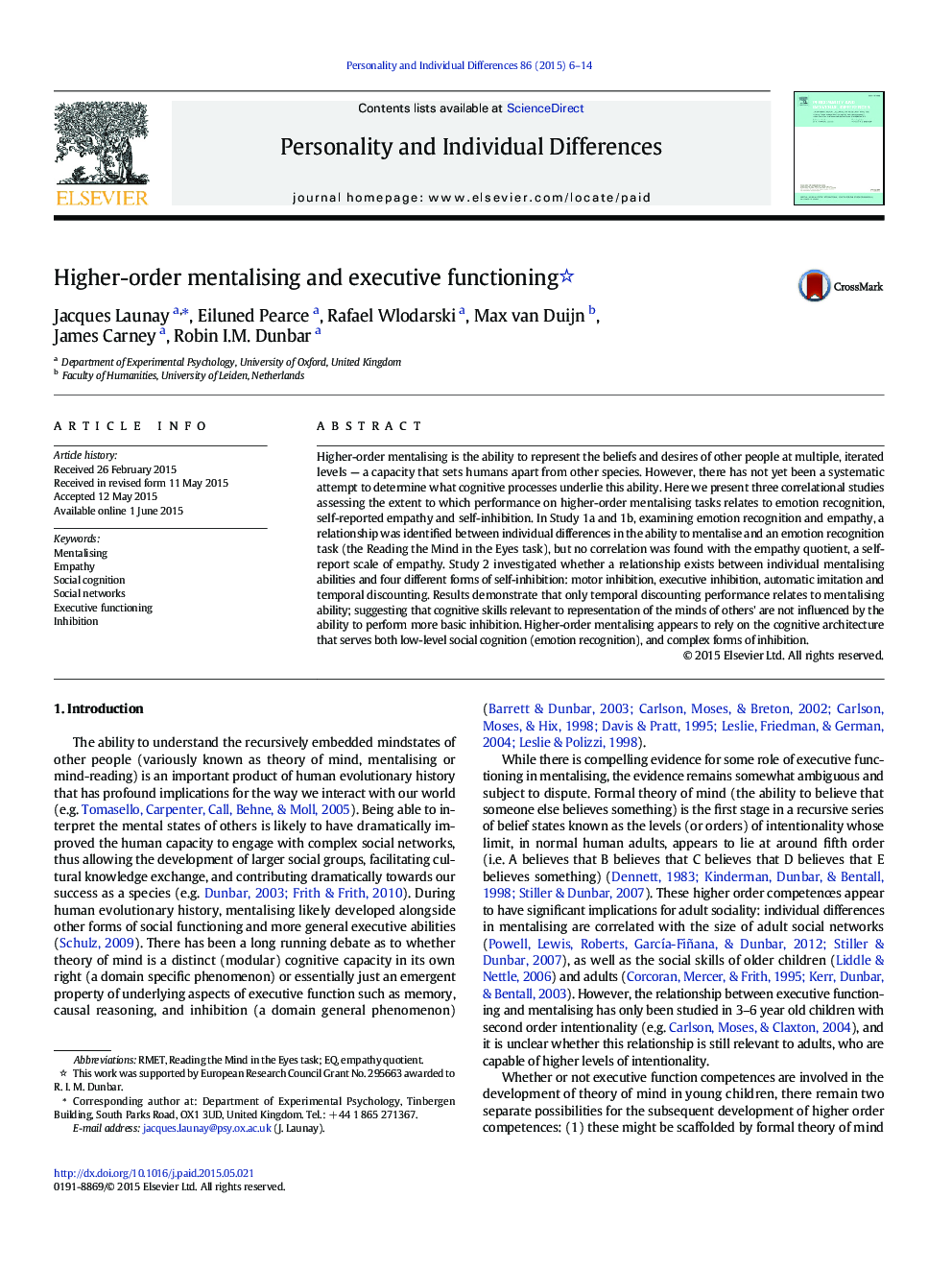| Article ID | Journal | Published Year | Pages | File Type |
|---|---|---|---|---|
| 889948 | Personality and Individual Differences | 2015 | 9 Pages |
•We test relationships between higher-order mentalising and other cognitive skills.•We identify and replicate a correlation with emotion recognition.•We find no relationship with self-reported empathy.•Of inhibition tests only temporal discounting relates to higher-order mentalising.
Higher-order mentalising is the ability to represent the beliefs and desires of other people at multiple, iterated levels — a capacity that sets humans apart from other species. However, there has not yet been a systematic attempt to determine what cognitive processes underlie this ability. Here we present three correlational studies assessing the extent to which performance on higher-order mentalising tasks relates to emotion recognition, self-reported empathy and self-inhibition. In Study 1a and 1b, examining emotion recognition and empathy, a relationship was identified between individual differences in the ability to mentalise and an emotion recognition task (the Reading the Mind in the Eyes task), but no correlation was found with the empathy quotient, a self-report scale of empathy. Study 2 investigated whether a relationship exists between individual mentalising abilities and four different forms of self-inhibition: motor inhibition, executive inhibition, automatic imitation and temporal discounting. Results demonstrate that only temporal discounting performance relates to mentalising ability; suggesting that cognitive skills relevant to representation of the minds of others' are not influenced by the ability to perform more basic inhibition. Higher-order mentalising appears to rely on the cognitive architecture that serves both low-level social cognition (emotion recognition), and complex forms of inhibition.
